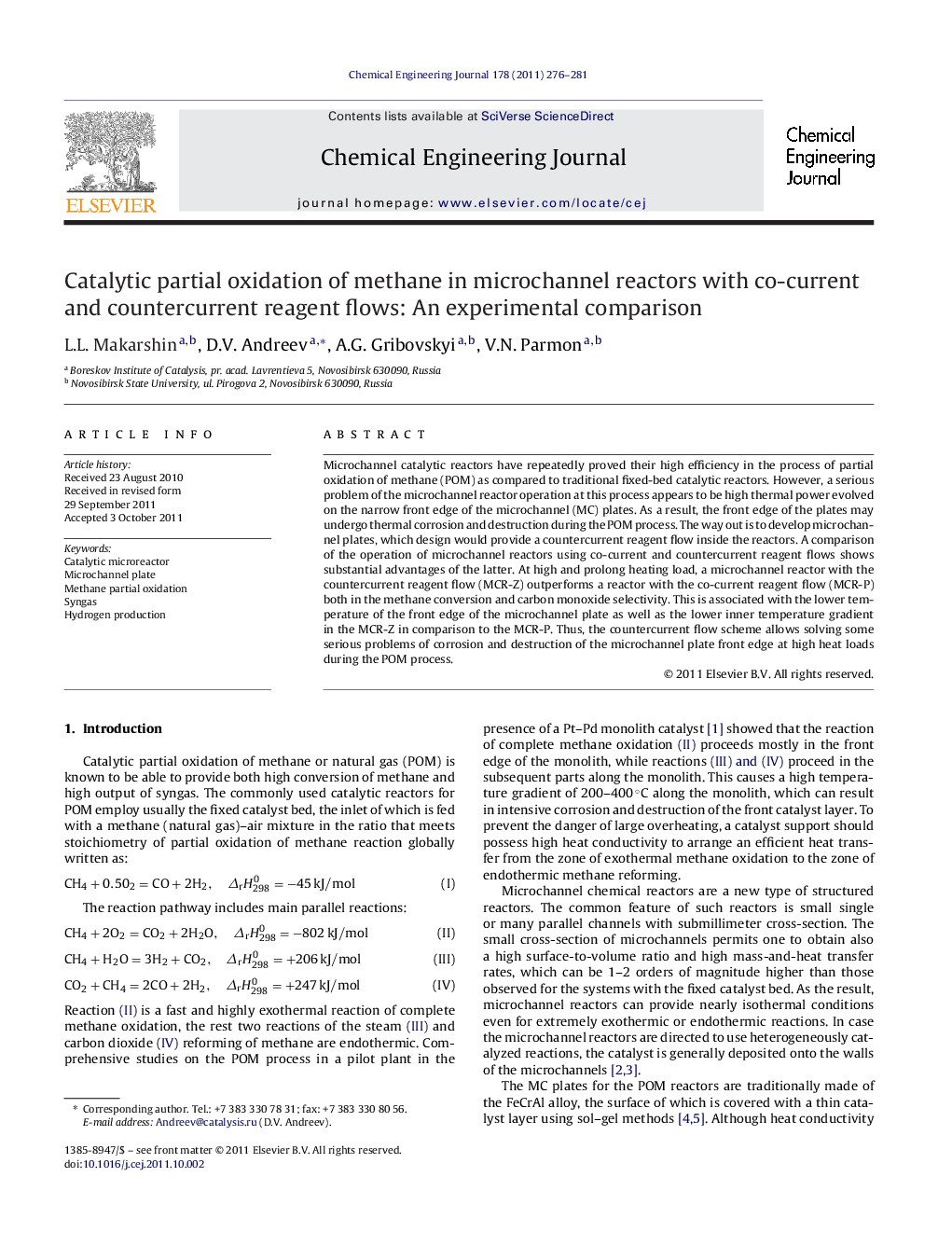| کد مقاله | کد نشریه | سال انتشار | مقاله انگلیسی | نسخه تمام متن |
|---|---|---|---|---|
| 150473 | 456450 | 2011 | 6 صفحه PDF | دانلود رایگان |

Microchannel catalytic reactors have repeatedly proved their high efficiency in the process of partial oxidation of methane (POM) as compared to traditional fixed-bed catalytic reactors. However, a serious problem of the microchannel reactor operation at this process appears to be high thermal power evolved on the narrow front edge of the microchannel (MC) plates. As a result, the front edge of the plates may undergo thermal corrosion and destruction during the POM process. The way out is to develop microchannel plates, which design would provide a countercurrent reagent flow inside the reactors. A comparison of the operation of microchannel reactors using co-current and countercurrent reagent flows shows substantial advantages of the latter. At high and prolong heating load, a microchannel reactor with the countercurrent reagent flow (MCR-Z) outperforms a reactor with the co-current reagent flow (MCR-P) both in the methane conversion and carbon monoxide selectivity. This is associated with the lower temperature of the front edge of the microchannel plate as well as the lower inner temperature gradient in the MCR-Z in comparison to the MCR-P. Thus, the countercurrent flow scheme allows solving some serious problems of corrosion and destruction of the microchannel plate front edge at high heat loads during the POM process.
► We study POM process in reactors with co-current and countercurrent reagent flows.
► Increasing GHSV increases temperature gradient along microchannel plates.
► For MC plates with co-current flows temperature gradient is severely higher.
► Countercurrent flows remove heat excess at reactor beginning, averaging temperature.
► This prevents destroying of microchannel plates in partial oxidation of methane.
Journal: Chemical Engineering Journal - Volume 178, 15 December 2011, Pages 276–281